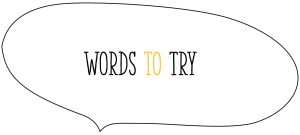5 Liberal, Socialist, and Radical Feminism
Harleen Uppal
 When it comes to sex and gender, from the day we are born, we are given our sex, and that day our sense of self begins to be shaped. All of this comes from the gender ideology of western society. Under this ideology, there are two types of people: men/boys, and women/girls. This ideology also associates societal roles to each “type” of person. This ideology has a long history and is reinforced in almost every aspect of society. There are many ways to have a gender, sex and sexuality. The dominant gender ideology is very limiting and a source of oppression.
When it comes to sex and gender, from the day we are born, we are given our sex, and that day our sense of self begins to be shaped. All of this comes from the gender ideology of western society. Under this ideology, there are two types of people: men/boys, and women/girls. This ideology also associates societal roles to each “type” of person. This ideology has a long history and is reinforced in almost every aspect of society. There are many ways to have a gender, sex and sexuality. The dominant gender ideology is very limiting and a source of oppression.

Feminism aims to challenge and change dominant gender ideology. Yet the term “feminism” cannot be described in just one sentence; it comes in many different forms. Feminism can be theoretical, explaining the how and why of social life. Feminism is also activism, and a social movement with a demand for social change. Feminism seeks to break the barriers of gender oppression and gender discrimination. For example, the #metoo movement is an online campaign that encourages victims of sexual violence to speak up and stand up for each other in hopes of societal change.
There are different ways to categorize feminism. For example, we can say that Western society saw the development of three broad historical “waves” of feminism. The first wave of feminism focused on equality for women, especially with regards to personhood rights such as the right to vote; the second wave emphasized the roles of women in work and in the home, as well as on sexuality and sexual politics; and finally, the third wave focused on gender and sexuality differences, rejecting the binary view. But we could use other means to categorize different types of feminism; the wave model implies that these kinds of feminism have stopping and starting points, but really all of these social dynamics are simultaneously ongoing.The three types of feminism that most often appear in the popular consciousness about feminism are liberal, socialist, and radical. The idea that men and women should have equal rights and opportunities in terms of personhood and positions of power and leadership is associated with liberal feminism. In socialist feminism, gender oppression comes from the intertwining of capitalism and patriarchy. Finally, radical feminism focuses predominantly on patriarchy as the cause of women’s oppression. We may see these kinds of feminism overlap in different cases. For example, consider advocacy for policies that implement parental leave. Do you think this cause is one that a liberal, socialist, or radical feminist would take up? Actually, probably the cause is consistent with each of these kinds of feminism, but for different reasons.
 Liberal feminism: men and women should have equal rights and opportunities in terms of citizenship status, personhood, and positions of power
Liberal feminism: men and women should have equal rights and opportunities in terms of citizenship status, personhood, and positions of power
Socialist feminism: gender oppression is rooted primarily in relationship between capitalism and patriarchy
Radical feminism: patriarchy is the root cause of women’s oppression
men and women should have equal rights and opportunities in terms of citizenship status, personhood, and positions of power
gender oppression is rooted primarily in relationship between capitalism and patriarchy
patriarchy is the root cause of women's oppression

